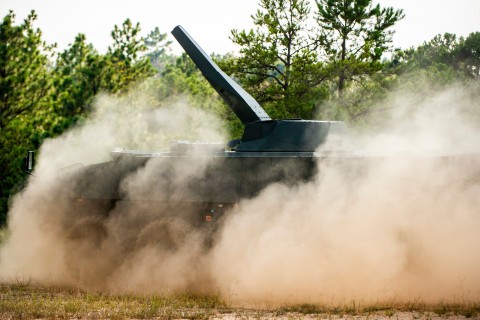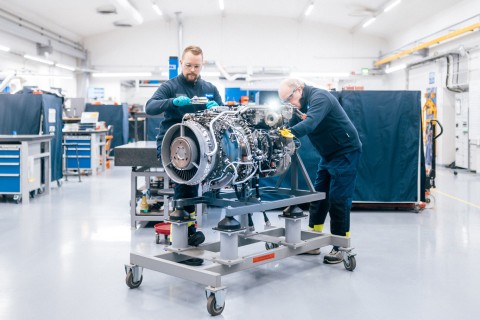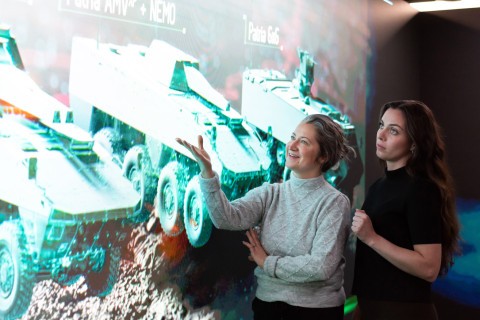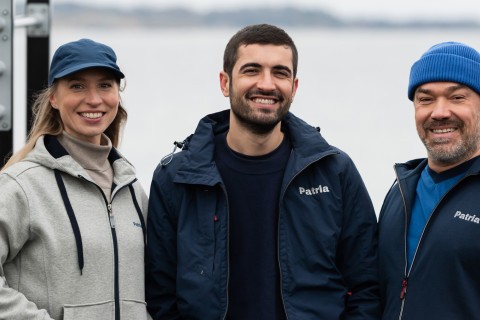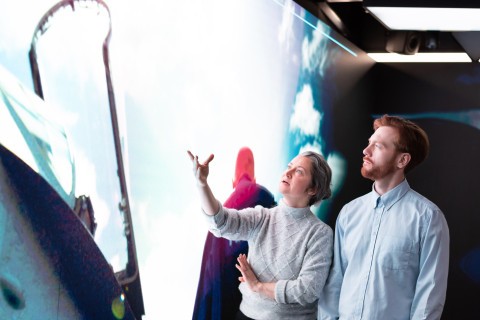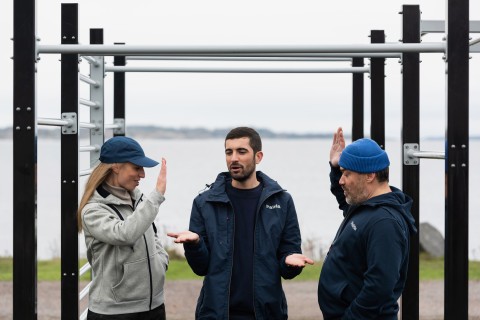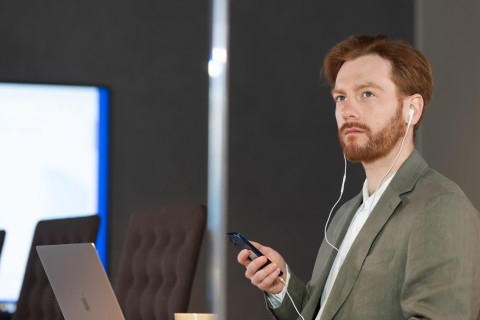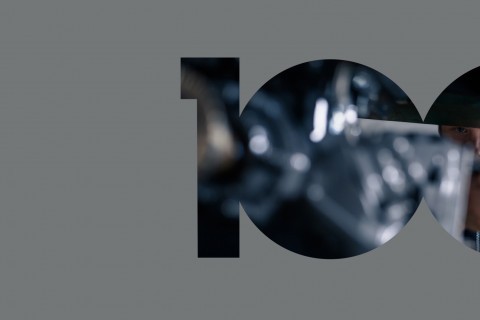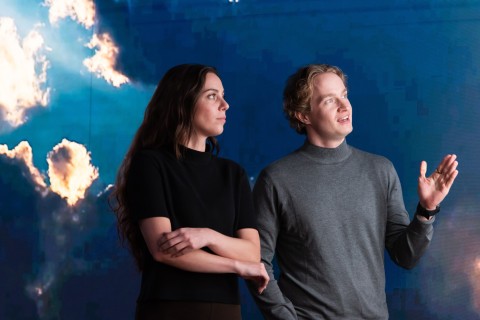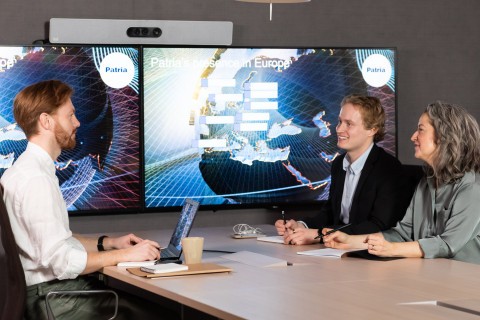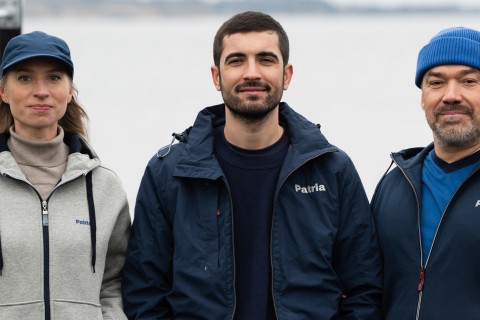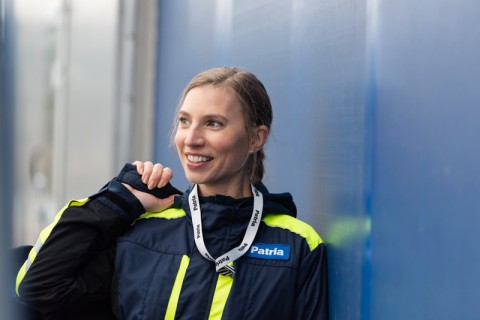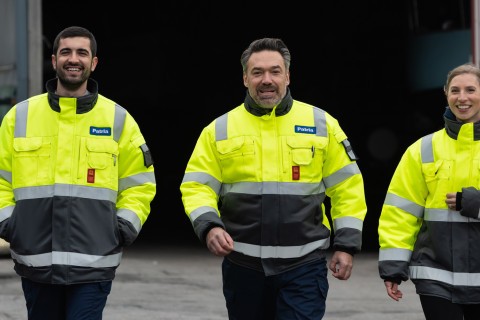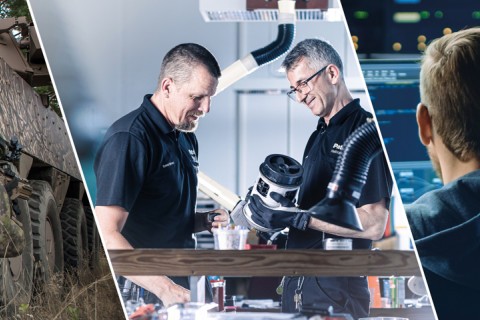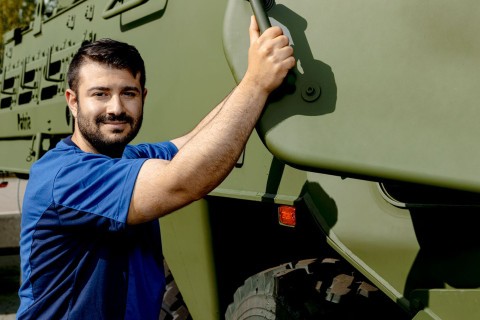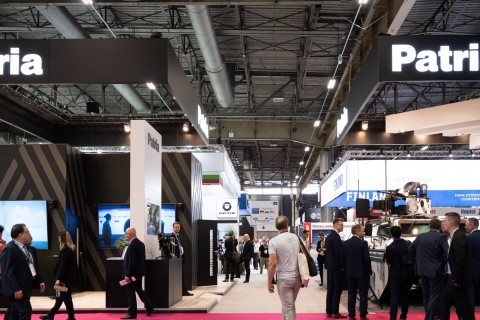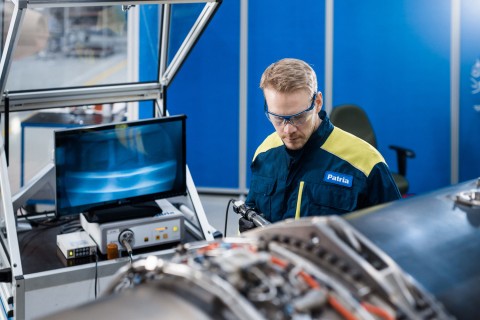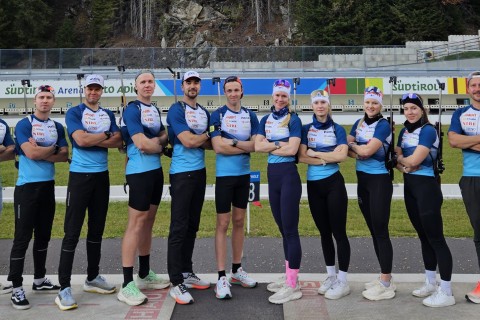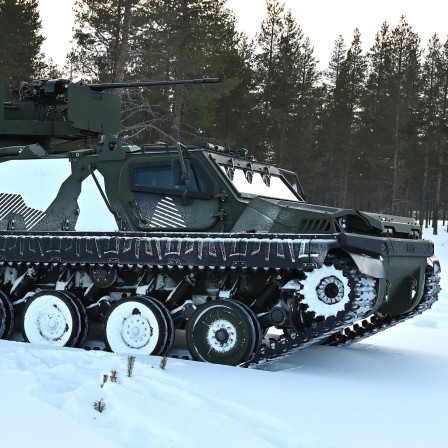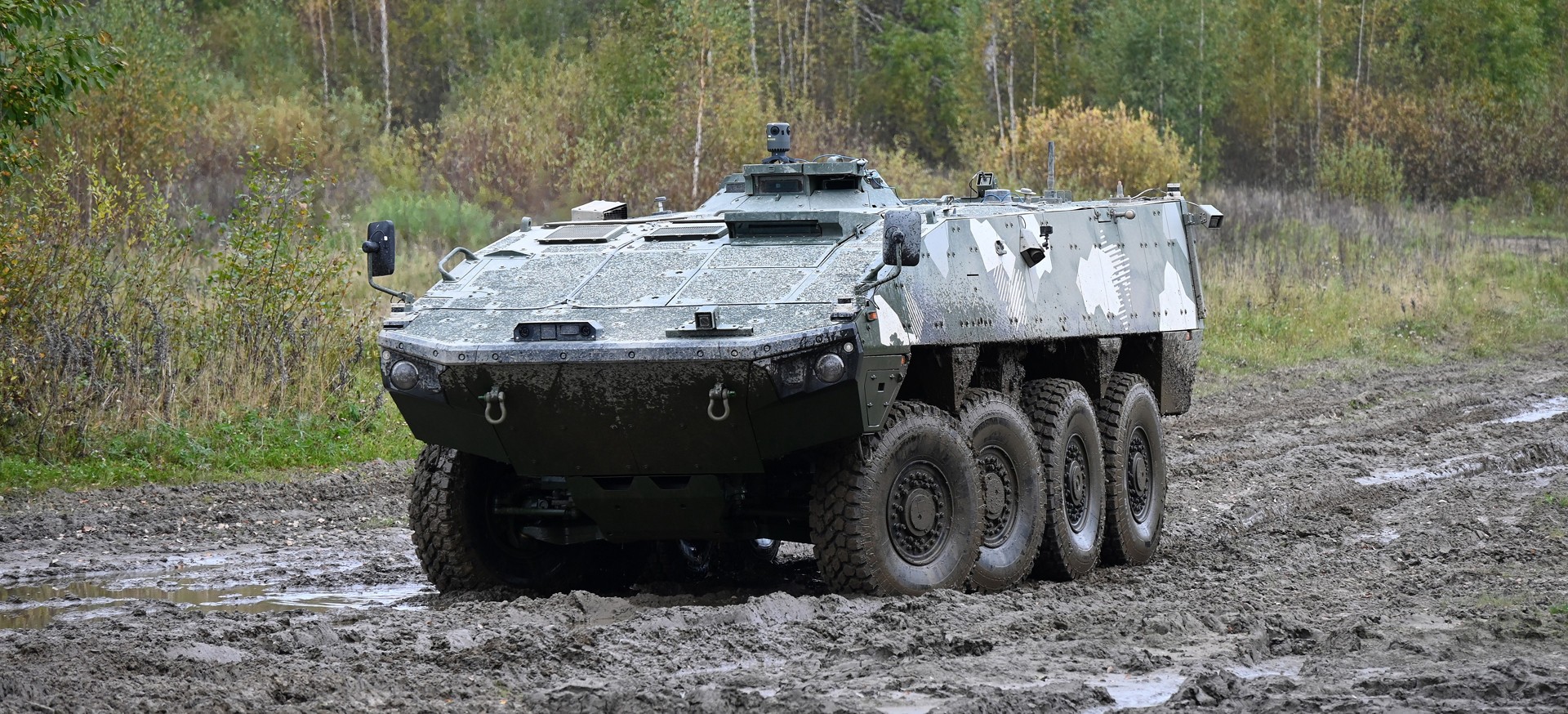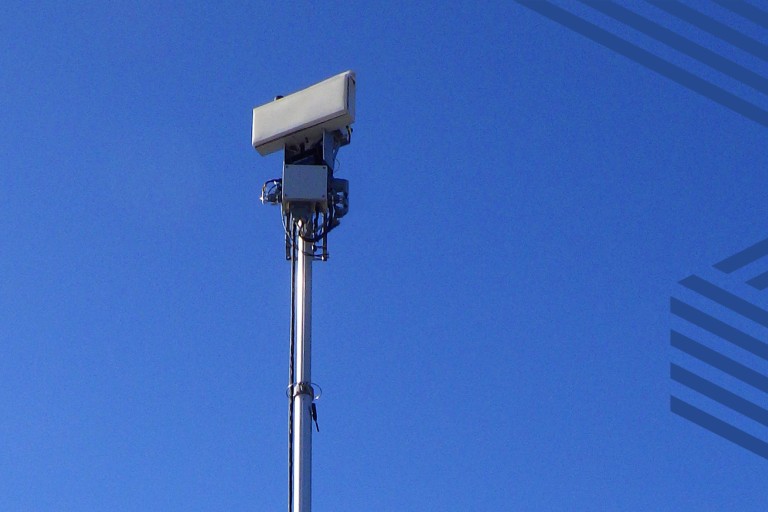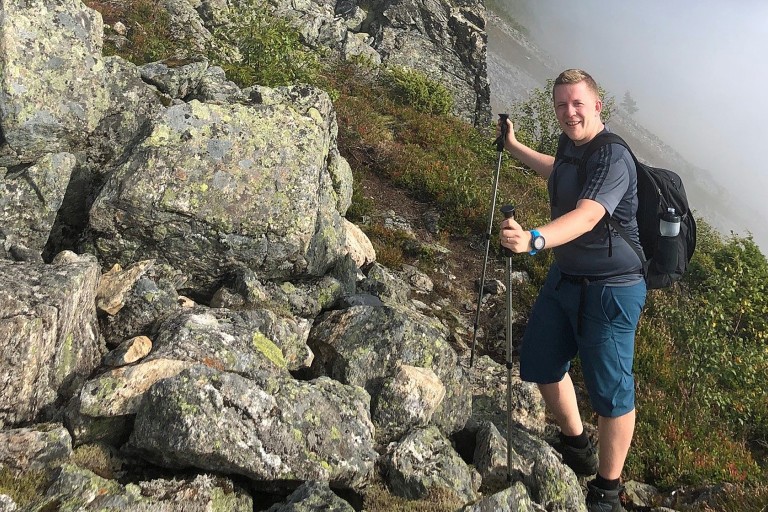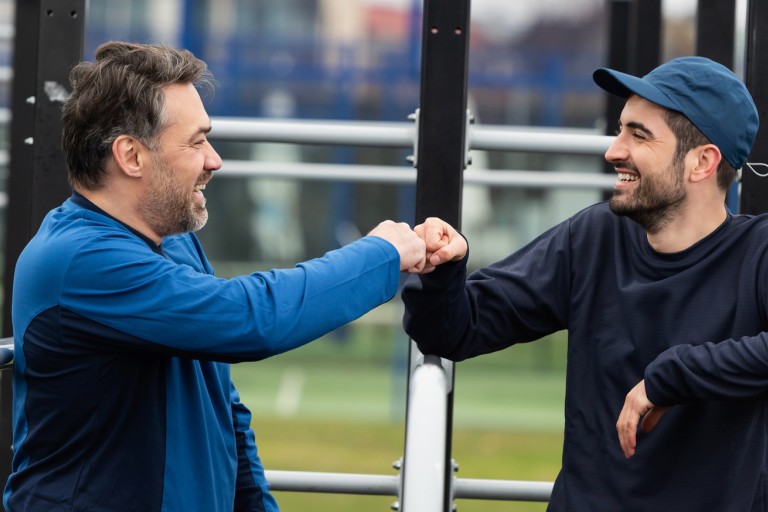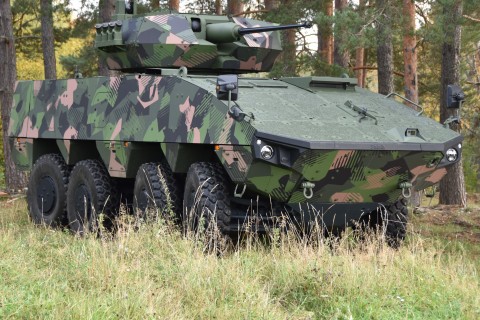
30.10.2025
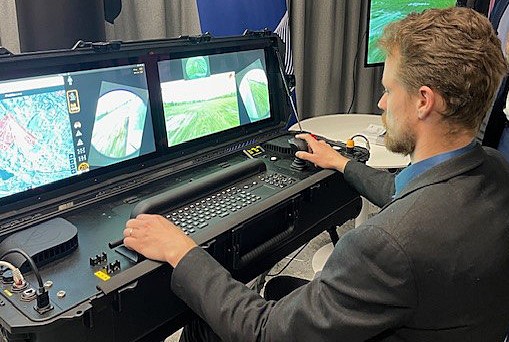
Finnish companies jointly developed a remote-controlled armoured vehicle. This was done as part of the eALLIANCE programme, which brings together expertise in both defence and civilian technology to pursue international breakthroughs under Patria's leadership.
Patria's AMV armoured vehicle is moving swiftly on the Parolannummi training ground, close to Hämeenlinna. But the driver of the vehicle is sitting in Helsinki, watching the terrain on a computer monitor and controlling the heavy vehicle with light movements of a joystick.
This is a demo in which Patria and five other Finnish companies are showcasing a remote-controlled vehicle. It combines expertise in defence and civilian technology into a high-performance package.
– This is an ecosystem whose capabilities are more than the sum of its parts, says Juha Välimäki, Project Manager at Patria.
The remote-controlled vehicle demo is a tangible example of the progress made in the eALLIANCE programme led by Patria. This flagship project is co-funded by Business Finland. It is unprecedented in how it brings together companies in the civil and defence sectors. Joint development projects pursue new breakthroughs in international markets.
Capabilities of six companies bundled in one package
The remote-controlled vehicle demo is built around the high-performance Patria AMV 8x8 vehicle. Patria has also integrated the DOME GEOINT system developed for military use into the package. It enables the visualisation of geographic and condition information on a single map display.

A Nokia camera mounted on the vehicle provides information about the operational environment. Designed for heavy-duty industrial applications, the camera boasts a 360-degree field of view.
Satellite data provided by the SAR satellite operations company ICEYE also enhances situational awareness. More terrain data is provided by detailed terrain images taken by the airships of the technology company Kelluu.
The real-time picture of the vehicle's operational environment can also be monitored using AR goggles. An augmented reality application developed by Basemark displays data to meet battlefield requirements.
The success of the demo requires efficient data transfer capabilities, as massive amounts of data are constantly transferred between different systems. Secure data transfer is enabled by Telia's 5G network.
The US military is interested in the project
Patria has been carrying out in-house development of unmanned vehicles for years now. Thanks to the eALLIANCE, this work has been rounded out with capabilities developed by other companies.
Juha Välimäki says that for the remote-controlled vehicle, Patria set out to assess the capabilities of different companies that could be combined to create a solution that would best serve the intended use of the vehicle.
– Once we had found the desired capabilities, our collaboration continued with the planning of practical implementation. For instance, we pondered how to integrate the different systems.
– We use demos to test how the systems perform together and what new capabilities could be integrated. This will gradually lead to potential product solutions and their commercialisation.
Demos play a important role in testing system integration, obtaining feedback from potential customers and other stakeholders to help drive development work forward.
Juha Välimäki says that demos are an important means of obtaining feedback from potential customers and other stakeholders to help drive development work forward. In the spring, the remote-controlled vehicle was showcased to representatives of a US technical research organisation, among others.
– The researchers were delighted to be presented with this kind of solution that combines several capabilities, instead of being shown a bunch of separate functionalities. The positive feedback from the research organisation also sparked the interest of the US military, says Välimäki.
The development of unmanned vehicles for reconnaissance, support and combat missions is a current trend around the world. Remote-controlled vehicles are needed for defence and security missions in which the deployment of people is not advisable due to reasons of security, for instance. The solution developed by Patria enables these capabilities, extending them to manned vehicles as well, thereby increasing their versatility and flexibility for various missions.
Seeking new solutions for the future
Demos are the most visible form of eALLIANCE collaboration. However, most of the work is carried out in joint co-innovation research projects. Juha Välimäki says that these projects focus on research to develop new solutions for the future instead of existing capabilities.
– We expect these projects to yield brand-new solutions or improved versions of existing products, which can be used to develop new capabilities.
At the time of writing, five eALLIANCE co-innovation projects are under way. Three are waiting for the green light.
One of the projects is exploring the collection and use of data generated by forest machines to evaluate terrain navigability.
Demos are the most visible form of eALLIANCE collaboration.
Another co-innovation project focuses on enhancing the automated operation of unmanned vehicles: in-vehicle drivers would no longer be required to operate large numbers of vehicles over wide terrain — they could be controlled remotely instead.
– The vast majority of the co-innovation projects are large-scale projects that run for several years. They involve various types of companies of different sizes. Research institutes may also be involved. Every project always needs a skilled coordinator to keep it moving forward, says Välimäki.
eALLIANCE is also open to new players that have not previously been active in the rapidly evolving defence sector.
– We hope that such cooperation will also open doors for Finnish companies to EU and NATO collaboration projects, which will in the long run strengthen exports and boost Finnish product development.
Customers want efficient packages
Juha Välimäki believes that cooperation between companies and research institutes is also highly effective because defence customers want ready-to-use system solutions, in which all the systems have already been fully integrated, rather than individual capabilities. This means that the customer gets a functional, high-performance solution right away, saving both time and money.
The greatest challenge in defence product development is that the pace of change is accelerating faster than ever.
Välimäki says that the greatest challenge in defence product development is that the pace of change is accelerating faster than ever. The battlefield rollout of drones is just one example.
– To respond to rapid changes, we must create even faster development processes. For this reason, it’s important to engage in national and international cooperation through a variety of ecosystems in order to stay at the forefront of technological development.
The eALLIANCE programme runs until 2029. More than 30 Finnish companies and research institutes are onboard.
– The eALLIANCE is an ecosystem that brings together a variety of companies and ideas. One of the best things about it is that it has enabled companies to meet and put their heads together to think about how to come up with innovations by combining different kinds of expertise, says Välimäki.
What did you like about the article?
Thank you for your opinion! You can share the article on social media using the buttons below:
